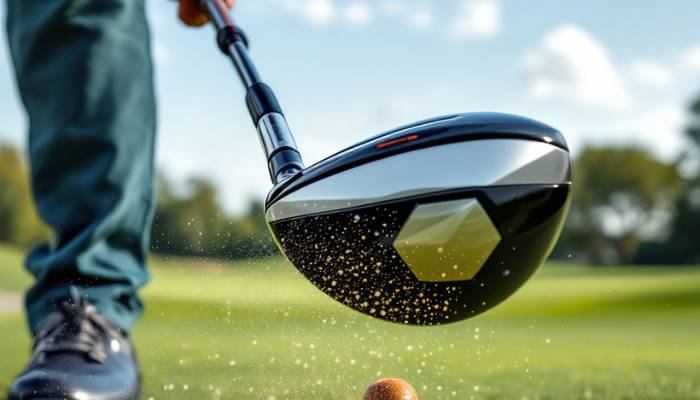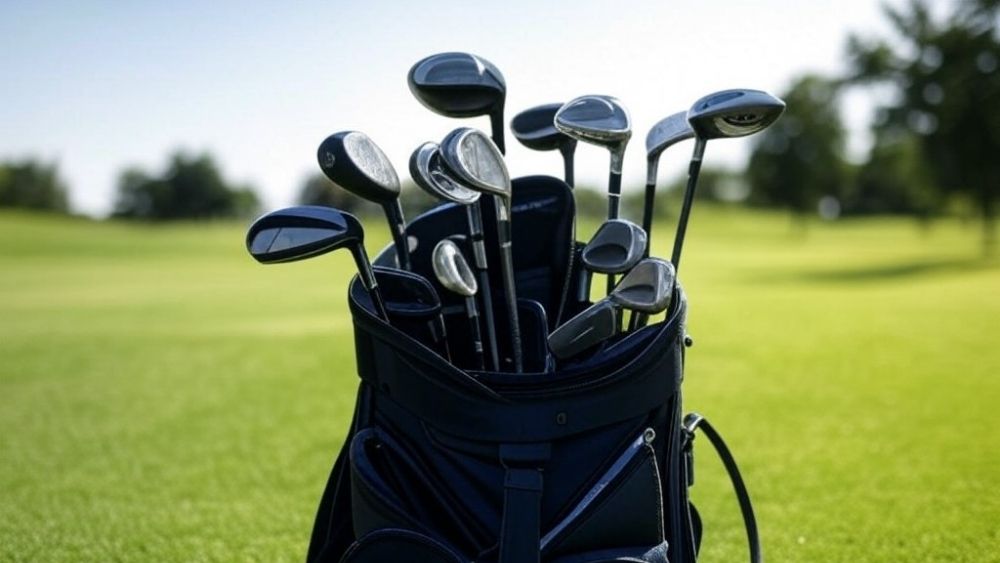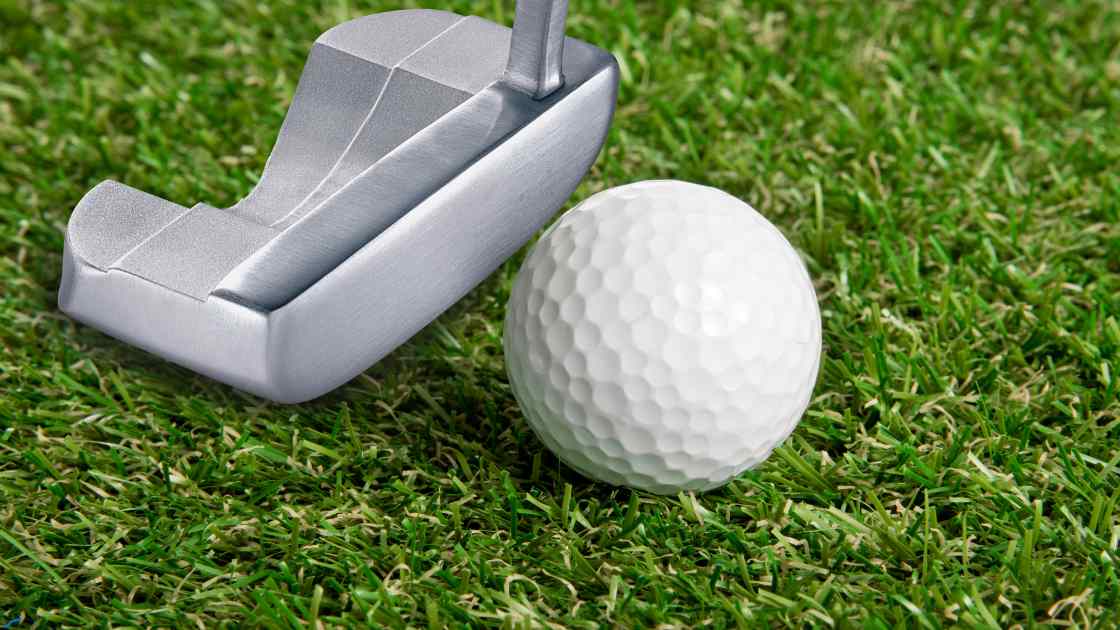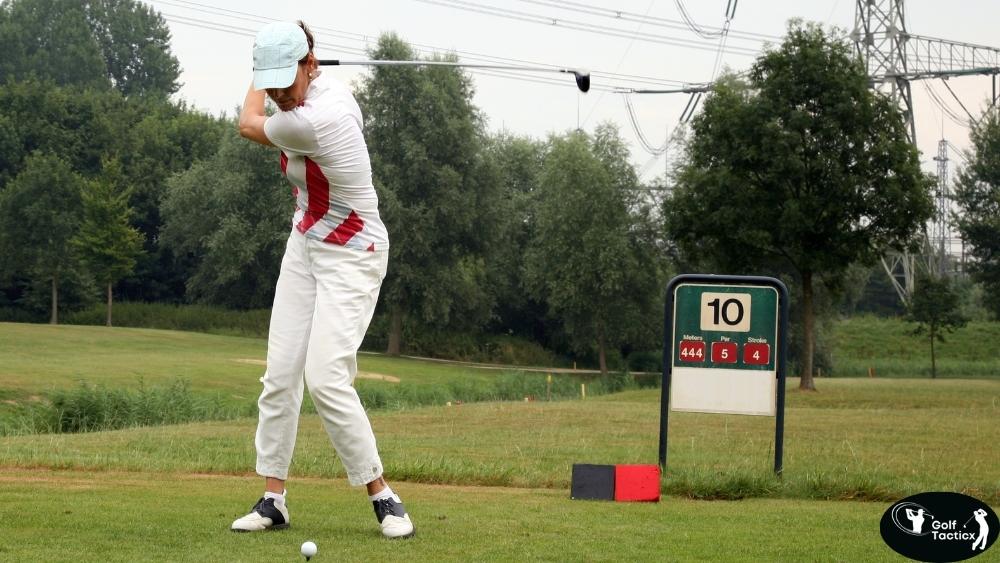We discussed in our previous post about essential golf clubs, now that you know which golf clubs to get as a beginner, it’s time to dive deeper into the different types of clubs you’ll use on the course. Understanding the differences between irons, woods, and wedges is essential for improving your game. Don’t worry, I’ll break it all down for you in simple terms!
Woods: Distance and Power
Woods are typically used for long-distance shots, like off the tee or on long fairway approaches. These clubs are designed for maximum distance, and their large heads allow for a larger sweet spot.
Driver (1-Wood)
The driver is probably the most well-known wood, and it’s used primarily for tee shots. It’s the longest club in your bag and designed for distance, which is why you’ll use it on par 4 and par 5 holes.
- Best for: Hitting long-distance shots off the tee
- Loft: Low loft, usually around 9-12 degrees
- Distance: Provides the longest distance for most golfers
Fairway Woods (3-Wood, 5-Wood)
Fairway woods are a bit shorter than the driver, and you’ll use them both off the tee and from the fairway for longer approach shots. These clubs offer great versatility, providing distance while maintaining control.
- Best for: Hitting long shots from the fairway or rough
- Loft: 3-wood usually has around 15 degrees of loft, and 5-wood has about 18 degrees
- Distance: Great for covering long distances when the driver isn’t the best option
Why Use Woods?

Woods are designed for maximum distance. The larger clubhead and longer shaft help generate speed, allowing you to hit the ball farther than with other clubs. Beginners may find that fairway woods are more forgiving than long irons, so they’re a great option to add to your bag early on.
Irons: Accuracy and Control
Irons are used for shots that require more control and accuracy, typically from the fairway or rough. They are numbered from 3 to 9, with the lower numbers being for longer distances and the higher numbers used for shorter, more accurate shots.
Long Irons (3, 4, 5 Irons)
Long irons are great for distance, but they can be harder to hit, especially for beginners. They have a lower loft, which means you need to make solid contact to get the ball in the air and control the distance.
- Best for: Long approach shots or recovery shots from the rough
- Loft: 3-iron typically has around 21 degrees of loft, while a 5-iron is closer to 26 degrees
- Distance: They offer a good mix of distance and control, but can be tough to hit cleanly
Mid Irons (6, 7, 8 Irons)
Mid irons are easier to hit than long irons and are commonly used for approach shots to the green. With these clubs, you’ll get more loft, making it easier to get the ball into the air.
- Best for: Approach shots to the green
- Loft: 6-iron has around 30 degrees of loft, while an 8-iron has about 36 degrees
- Distance: Offers a balance between distance and control, making them very versatile
Short Irons (9-Iron, Pitching Wedge)
Short irons are the easiest to hit and are best for accurate, shorter shots into the green. These clubs offer high loft, allowing the ball to go high in the air with a soft landing.
- Best for: Approach shots to the green, chipping, and short game
- Loft: 9-iron has around 41 degrees of loft, and the pitching wedge has about 45-48 degrees
- Distance: These clubs are great for shots that need more precision and a softer landing
Why Use Irons?
Irons are essential for accurate shots, especially when you’re approaching the green. They allow you to control the ball’s trajectory, which is why they’re perfect for situations where distance isn’t everything—accuracy is key.
Wedges: Precision Around the Green
Wedges are a subcategory of irons, designed for shots that require high loft and precision. They are typically used for shots near the green, including approach shots, chips, and bunker shots.
Pitching Wedge (PW)
The pitching wedge is usually your go-to club for approach shots from around 100-130 yards. It provides a high ball flight, which makes it perfect for soft landings on the green.
- Best for: Approach shots from medium distances
- Loft: Typically around 45-48 degrees
- Distance: Great for shots that require accuracy and control
Sand Wedge (SW)
The sand wedge is designed specifically for bunker shots but is also very effective for short approach shots or chips from the sand or rough.
- Best for: Shots from the sand, short chips, or bunker shots
- Loft: Typically around 54-58 degrees
- Distance: Perfect for shots around the green that require more loft
Lob Wedge (LW)
The lob wedge offers even more loft than the sand wedge and is great for delicate chips and lobs around the green. It’s also useful for high approach shots when you need to clear an obstacle.
- Best for: High, soft shots over obstacles
- Loft: Typically 60 degrees or more
- Distance: Shorter, high-trajectory shots around the green
Gap Wedge (GW)
The gap wedge fills the space between your pitching wedge and sand wedge. It’s perfect for approach shots from around 100 yards and is often used for delicate chip shots.
- Best for: Short approach shots and chips
- Loft: Typically 50-54 degrees
- Distance: Ideal for when you need accuracy between the pitching and sand wedges
Why Use Wedges?
Wedges are all about precision. Whether you’re hitting a short shot into the green or trying to escape a bunker, wedges give you the high loft and control needed for delicate shots. They’re your best friend for improving your short game and lowering your scores.
Key Differences at a Glance
| Club Type | Use | Loft Range | Distance Range | Best For |
| Woods | Long-distance shots | 9-18 degrees | 200+ yards | Tee shots, long fairway shots |
| Irons | Approach shots, control | 18-45 degrees | 120-200 yards | Hitting from fairway, greenside |
| Wedges | Short approach shots | 45-60 degrees | 50-120 yards | Chipping, sand shots, delicate shots |
How to Choose the Right Club
Knowing when to use each type of club is key to mastering the game. Here’s a quick guide:
- Use your driver (wood) when you need maximum distance off the tee.
- Use a 3- or 5-wood when you’re approaching from a longer distance on the fairway.
- Switch to your iron for more controlled, mid-range shots.
- Pull out your wedge when you’re getting close to the green or need to escape a sand trap.
Conclusion
Understanding the differences between woods, irons, and wedges is crucial for improving your golf game. Each club has its own purpose and knowing when to use which one will make all the difference. Don’t worry if you don’t have all the clubs in your bag right away—start with the essentials, and as you progress, you’ll learn how to integrate these clubs more effectively into your play.
Stay tuned for our next post, where we’ll talk about choosing the best golf ball for your game. Understanding golf balls will help you optimize your shots even further!
Keep reading, and we’ll help you select the perfect golf ball to match your skills.
















Leave a Reply